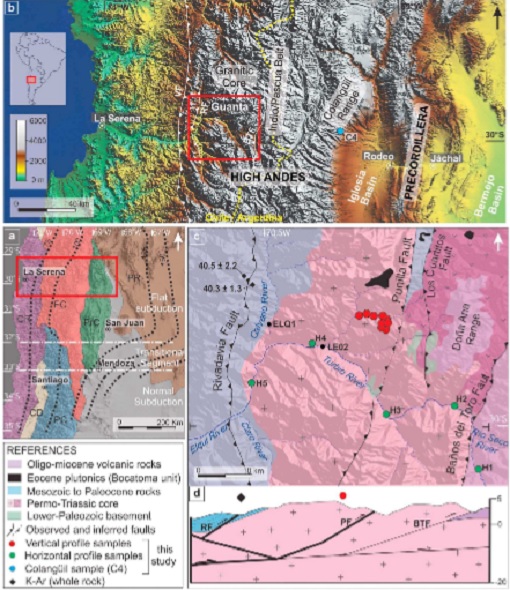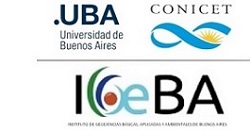Thermochronologic Evidence for Late Eocene Andean Mountain Building at 30°S
Autores:
Ana C. Lossada, Laura Giambiagi, Gregory D. Hoke, Paul G. Fitzgerald, Christian Creixell, Ismael Murillo, Diego Mardonez, Ricardo Velásquez, Julieta Suriano
Año de la publicación:
2 017
Revista:
Tectonics, Volume36, Issue11, 17 October 2017
Abstract:
The Andes between 28° and 30°S represent a transition between the Puna-Altiplano Plateau and
the Frontal/Principal Cordillera fold-and-thrust belts to the south. While significant early Cenozoic
deformation documented in the Andean Plateau, deciphering the early episodes of deformation during
Andean mountain building in the transition area is largely unstudied. Apatite fission track (AFT) and
(U-Th-Sm)/He (AHe) thermochronology from a vertical and a horizontal transect reveal the exhumation history
of the High Andes at 30°S, an area at the heart of this major transition. Interpretation of the age-elevation
profile, combined with inverse thermal modeling, indicates that the onset of rapid cooling was underway by
~35 Ma, followed by a significant decrease in cooling rate at ~30–25 Ma. AFT thermal models also reveal a
second episode of rapid cooling in the early Miocene (~18 Ma) related to rock exhumation to its present
position. Low exhumation between the rapid cooling events allowed for the development of a partial
annealing zone. We interpret the observed Eocene rapid exhumation as the product of a previously
unrecognized compressive event in this part of the Andes that reflects a southern extension of Eocene
orogenesis recognized in the Puna/Altiplano. Renewed early-Miocene exhumation indicates that the late
Cenozoic compressional stresses responsible for the main phase of uplift of the South Central Andes also
impacted the core of the range in this transitional sector. The major episode of Eocene exhumation suggests
the creation of significant topographic relief in the High Andes earlier than previously thought.
Imagen:

